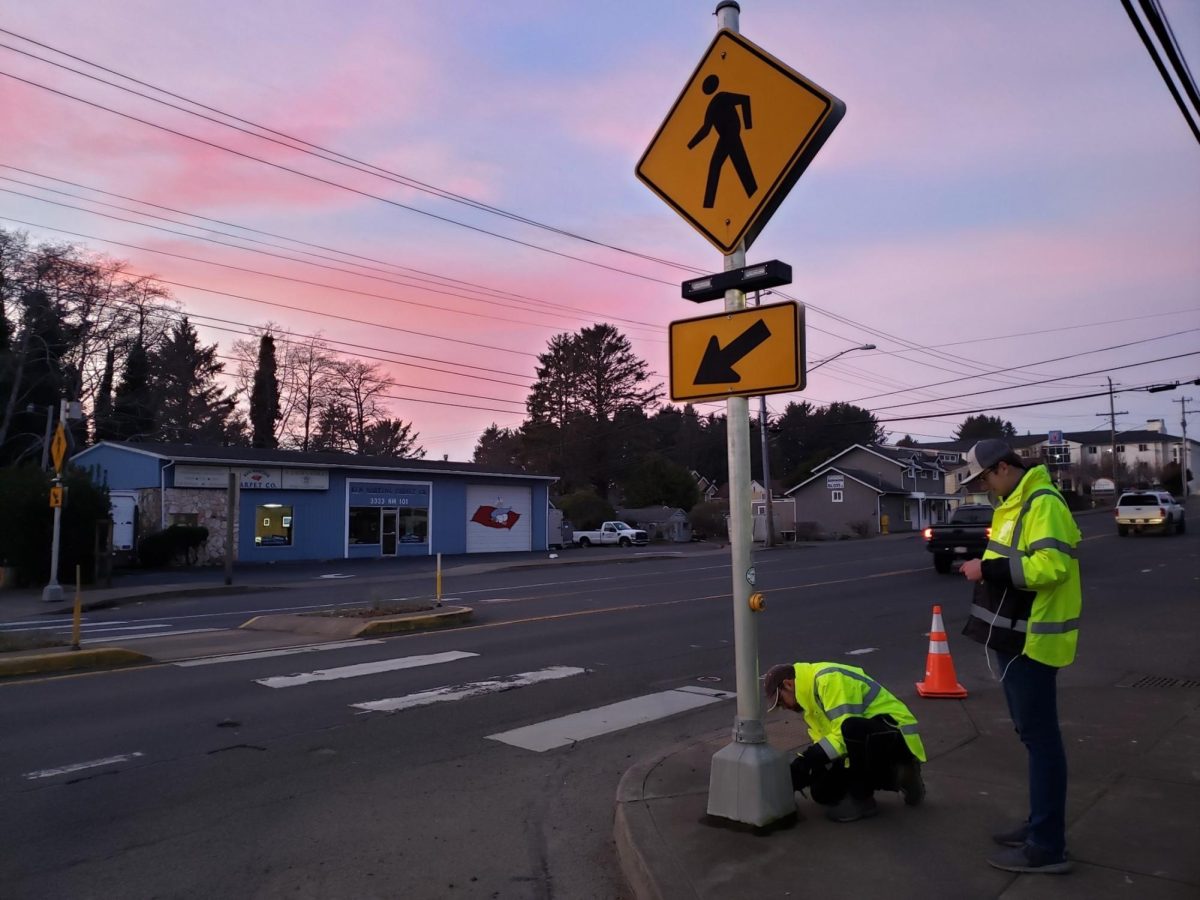The Oregon Department of Transportation plans to bring more than 26,000 curb ramps into compliance with the Americans with Disabilities Act by 2032, statewide, as part of the ADA Curb Ramp Capital program.
According to Mindy McCartt, public information officer at ODOT, these projects come with the 2024-2027 Statewide Transportation Improvements Program, known as STIP, which is a document that defines the scope of work in which ODOT is going to focus on from 2024 to 2027.
The program was adopted in July 2023 and approved by the Federal Highway Administration and Federal Transit Administration in September 2023, an amount totaling $3.3 billion.
According to McCartt, the Philomath-Corvallis area is one of 33 projects focusing on curb ramps that are either in their design or construction phases. A curb ramp is a sloping pedestrian way that provides access between a sidewalk and a surface located above or below an adjacent curb face.
Federal legislation mandates that curb ramps are installed at all intersections and midblock locations where pedestrian crossings exist, McCartt said.
The Corvallis ADA Curb Ramps project is in its design phase, which began in 2023 and is scheduled to finish this year.
According to McCartt, part of the remaining work in the design phase is figuring out which places need curb ramps and which existing curb ramps need modification or removal depending on the needs of the communities. Construction is planned to begin in 2025 and finish in 2027.
“Before we break ground on any project, any construction project, so much work goes on the back end,” McCartt said. “Anytime we’re inside city limits and county limits, we always partner with the city and county when working on projects like this.”
In Benton County, 237 curb ramps are estimated to be modified, added or removed, according to McCartt.
She added that curb ramps will be made to slope gently into the road and be painted yellow. Textured plates, called truncated domes, will be added to allow pedestrians to feel when they are crossing and slow down before rolling into traffic if they are using a wheelchair or walker, working like a speed bump.
“All of that kind of stuff is what we look at when we’re talking about ADA,” McCartt said. “They provide access to all people. Wheelchairs, strollers, walkers, hand carts, bicycles, pedestrians; all of that mobility is considered when we look at these curb ramps.”
Construction will be spread out over time to minimize the disruption of traffic at any one time, according to McCartt. Construction-ready locations will be started and completed first, while more complex areas, such as areas with fire hydrants, utility poles, land requirements or environmental permits will be done later on.
“We don’t want to shut anyone down or be disruptive to businesses,” McCartt said. “Even though it can be disruptive, we do our best to do a good job and keeping people moving and keeping it as efficient as we can to not disrupt community.”
As of now, it is unclear what a specific timeline will look like for construction and what the budget will be until the design is laid out, including the potential impact of construction on traffic, according to McCartt.
ODOT has provided a website showing real-time updates on the project, which has a link to an email sign-up to keep people up to date on big changes.


















































































![Newspaper clipping from February 25, 1970 in the Daily Barometer showing an article written by Bob Allen, past Barometer Editor. This article was written to spotlight both the student body’s lack of participation with student government at the time in conjunction with their class representatives response. [It’s important to note ASOSU was not structured identically to today’s standards, likely having a president on behalf of each class work together as one entity as opposed to one president representing all classes.]](https://dailybaro.orangemedianetwork.com/wp-content/uploads/2025/03/Screenshot-2025-03-12-1.00.42-PM-e1741811160853.png)
























